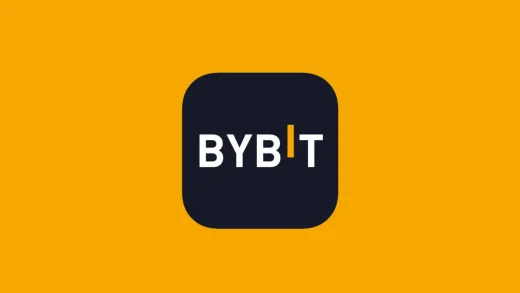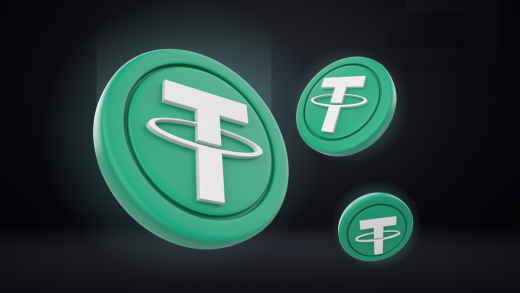Bitcoin (BTC), the first and most recognized cryptocurrency, has been at the forefront of the digital currency revolution since its inception in 2009. Created by an unknown entity known as Satoshi Nakamoto, Bitcoin set the stage for the development of decentralized finance, offering a new way for individuals to transact without the need for intermediaries like banks or governments. This article provides a comprehensive look at Bitcoin, its functionality, the platforms supporting it, how it can be exchanged, and its long-term potential.
What is Bitcoin (BTC)?
Bitcoin is a decentralized digital currency that operates on a peer-to-peer network, meaning it allows users to send and receive value without relying on a central authority or intermediary. Bitcoin transactions are secured through cryptography and recorded on a public ledger known as the blockchain. This ledger is maintained by a network of computers (referred to as nodes) that verify transactions and keep the system decentralized.
Unlike traditional fiat currencies such as the US dollar or the euro, Bitcoin is not issued or controlled by any government or financial institution. Instead, it is mined by individuals who use computing power to solve complex mathematical problems, earning new bitcoins as a reward. This process is known as mining, and it ensures the steady, decentralized creation of new BTC while securing the network.
Bitcoin’s supply is capped at 21 million coins, making it a deflationary asset. As of today, around 19 million bitcoins have been mined, with the remaining coins expected to be mined by the year 2140.
How Does Bitcoin Work?
Bitcoin operates on blockchain technology, which is a decentralized and immutable ledger. Here’s how the system works:
- Transactions: Users send and receive bitcoin through digital wallets, using a public key (the wallet address) and a private key (a password-like code that allows you to sign transactions).
- Verification: When a transaction is initiated, it is broadcast to the entire Bitcoin network. Miners, using computational power, work to solve complex algorithms to validate these transactions.
- Mining and Block Creation: Once the transaction is verified, it is bundled together with other transactions into a block. Miners compete to solve a cryptographic puzzle, and the first one to solve it gets to add the new block to the blockchain. This process is known as Proof of Work (PoW).
- Blockchain and Immutability: After a block is added, it becomes part of the immutable blockchain. The transaction is now complete, and the ledger is updated across all nodes.
Why Bitcoin is Important
Bitcoin has introduced several key concepts that have reshaped the financial landscape:
- Decentralization: Bitcoin eliminates the need for intermediaries such as banks or financial institutions, allowing for a decentralized network where individuals have full control over their assets.
- Limited Supply: With a hard cap of 21 million coins, Bitcoin is inherently deflationary, making it an attractive store of value, often compared to gold.
- Financial Inclusion: Bitcoin enables people in underbanked or unbanked regions to participate in the global economy by giving them access to a financial system that requires only an internet connection.
- Borderless Transactions: Bitcoin allows for fast, low-cost international transactions, bypassing traditional banking fees and delays.
- Security: Bitcoin transactions are secured by cryptographic protocols and the decentralized network, making it extremely difficult to alter the blockchain.
Bitcoin Use Cases
Bitcoin’s versatility and decentralization have led to several notable use cases:
- Store of Value: Due to its limited supply, many see Bitcoin as “digital gold,” a hedge against inflation and economic instability. Investors hold Bitcoin to preserve wealth over time.
- Medium of Exchange: Although its volatility can sometimes be a barrier, Bitcoin is used for online purchases, remittances, and peer-to-peer transactions. Many merchants and services accept Bitcoin as a payment option.
- Cross-border Transfers: Bitcoin simplifies the process of sending money across borders. Unlike traditional remittance services, Bitcoin allows for near-instantaneous transactions with minimal fees.
- Investment: As Bitcoin’s value has skyrocketed over the years, it has become a popular investment asset. Many institutional investors and hedge funds are now including Bitcoin in their portfolios.
- Decentralized Finance (DeFi): Bitcoin plays a role in the burgeoning DeFi sector, where it is often used as collateral for loans, staking, or earning passive income.
Platforms that Support Bitcoin
Bitcoin is widely supported across a vast array of platforms, including cryptocurrency exchanges, wallets, and even financial institutions. Some of the most popular platforms that support Bitcoin include:
- Coinbase: A well-known exchange in the cryptocurrency space, Coinbase allows users to buy, sell, and hold Bitcoin. It offers a user-friendly platform for beginners and experienced traders alike.
- Binance: As one of the largest cryptocurrency exchanges globally, Binance offers numerous trading pairs with Bitcoin, along with advanced features for seasoned traders.
- Kraken: Kraken is a highly secure exchange that supports Bitcoin trading and offers margin trading and staking options.
- Gemini: Gemini is a regulated exchange that is especially popular among institutional investors. It provides secure storage and trading for Bitcoin.
- PayPal: In recent years, PayPal has added support for Bitcoin, allowing users to buy, sell, and hold BTC directly from their PayPal accounts.
- BlockFi: A platform that allows Bitcoin holders to earn interest on their BTC holdings and even take out loans using their Bitcoin as collateral.
- Hardware Wallets: Devices such as Ledger Nano S and Trezor provide secure cold storage for Bitcoin, allowing users to store their private keys offline.
Sending and Receiving Bitcoin
Bitcoin can be sent and received through a variety of methods. The process generally involves:
- Creating a Wallet: A Bitcoin wallet is a digital or hardware tool that stores your private and public keys. Popular wallets include mobile wallets (like Mycelium or Electrum), desktop wallets, and hardware wallets (such as Ledger or Trezor).
- Public Address: To receive Bitcoin, you provide the sender with your public wallet address, which is a string of letters and numbers.
- Transaction Fee: When sending Bitcoin, you must also include a transaction fee, which incentivizes miners to validate your transaction quickly. The fee can vary depending on network congestion.
- Confirmation: After the transaction is broadcast to the network, it is included in a block and confirmed. The number of confirmations required varies, but typically 1-6 confirmations are needed before the transaction is considered fully secure.
Bitcoin Trading Pairs
Bitcoin can be traded against nearly every cryptocurrency and even fiat currencies. Some of the most common trading pairs include:
- BTC/USD: The most widely traded pair, which allows users to exchange Bitcoin for US dollars.
- BTC/EUR: Bitcoin is also traded against the euro, making it popular in European markets.
- BTC/ETH: Ethereum is frequently traded against Bitcoin, allowing users to exchange between the two largest cryptocurrencies.
- BTC/USDT: Tether (USDT) is a stablecoin pegged to the US dollar, providing a stable medium to trade with Bitcoin.
- BTC/LTC: Litecoin, often referred to as “the silver to Bitcoin’s gold,” is another cryptocurrency often paired with Bitcoin.
The Bitcoin Project and Future Outlook
Since its creation in 2009, Bitcoin has faced numerous challenges, from skepticism by governments to competition from new blockchain technologies. Yet, Bitcoin has maintained its dominance, with a market cap that often represents a significant portion of the entire crypto market.
Bitcoin has gone through several development phases, including the adoption of Segregated Witness (SegWit) to improve transaction speed and scalability, and the introduction of the Lightning Network, which enables instant, low-cost Bitcoin transactions.
As more institutional investors enter the market and countries consider integrating Bitcoin into their financial systems, the future of Bitcoin looks promising. Countries like El Salvador have even adopted Bitcoin as legal tender, paving the way for broader acceptance.
However, Bitcoin’s future is not without challenges. Concerns about energy consumption and scalability persist. While the transition to Proof of Stake (PoS) is being explored by other cryptocurrencies like Ethereum, Bitcoin’s Proof of Work (PoW) model remains a contentious topic due to its environmental impact.
On The End
Bitcoin is more than just a cryptocurrency; it is a technological revolution that has transformed how we perceive money, finance, and decentralized systems. As the first and most valuable digital asset, Bitcoin has laid the groundwork for the growth of an entire industry and continues to shape the future of financial systems.
With its robust security, decentralization, and increasing mainstream adoption, Bitcoin has the potential to remain a central figure in the cryptocurrency space for years to come. Whether you’re looking to use it for transactions, investments, or as a store of value, Bitcoin offers something unique in the world of finance.















2 Responses
[…] All information about Bitcoin (BTC) […]
[…] All information about Bitcoin (BTC) […]